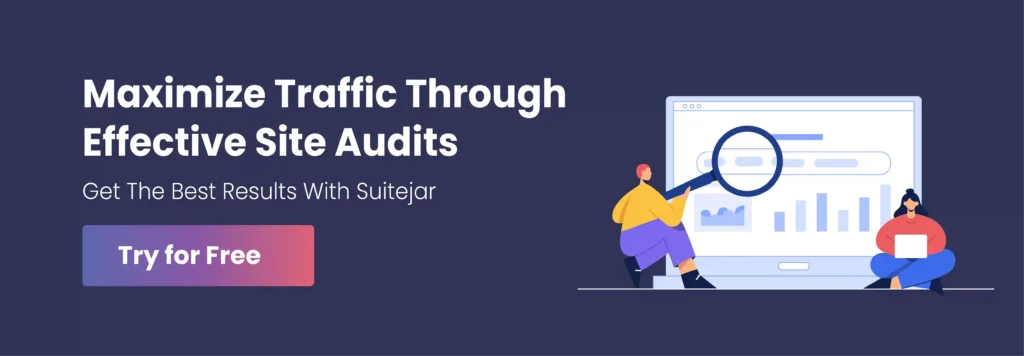Rank on Google's first page in 3 months
10 Golden SEO Rules You Need To Know For Higher Google Rankings
May 31, 2024 | Athira K
You should always consider SEO as the best marketing strategy for your business.
It does not matter whether you have no products or services to sell, a proper SEO strategy will help you to improve your credibility and visibility in search engine results.
The thing is, when developing a search engine optimization strategy, you should pay attention to many SEO rules. Our blog will keep you informed of the best SEO rules that you should keep in mind when doing SEO for your business.
Here Are The 7 Golden SEO Rules Just for You
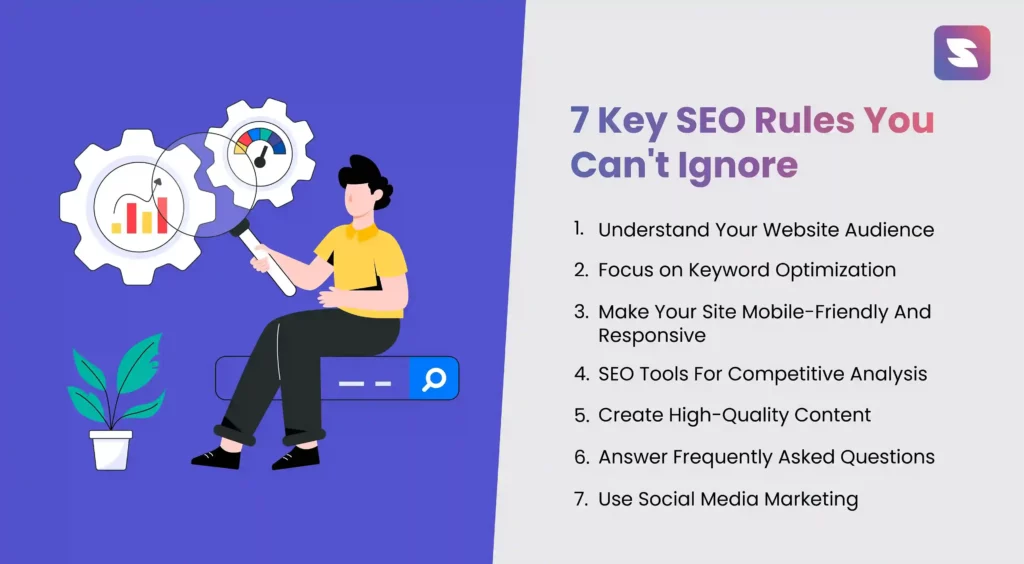
1. Understand Your Website Audience
The main SEO strategy rule is understanding your target audience. You do this by conducting detailed audience research as per your business requirements and needs. You have to update your content to answer their questions, solve their problems, and match your search intent. Thoroughly identify your targeted audience’s needs, pain points, and challenges.
Your target audience is the main foundation of your SEO strategy. When you clearly understand the audience that helps in your SEO campaigns, like,
- Attract the right audience to your website
- Improve your user engagement metrics( bounce rates and all)
- Increase conversions
- Boost organic traffic and rankings
After setting up your target audience that benefits you in so many areas of your business, like,
- Content marketing
- Email marketing
- Social media marketing
- SEO
You can find your target audience with some easy process,
- Research Competitor Audience
Researching your target audience can provide you with valuable data for your audience segmentation. First, you can list your competitors in your business niche. And analyze how audiences interact with your products, services,, and your website content. Also, look at their social media interactions, customer reviews, and other information to get this information.
- Analyze Your Internal Data
You can analyze and understand the internal data because that helps you to know your existing customers. Look through their purchase history, customer support interaction, marketing campaign responses, and all. This helps you divide your audience based on their preferences. Visit Google Analytics and get insights into the people who visit your website, how they found your business,, and their behavior on your site.
- Collect Social Media Analytics
Social media platforms are another feature that allows you to get to know your audience. Most social media platforms give you data about the age, location, gender, and interests of your website followers. You can check those posts that got the most likes, shares, and comments. This will help you to get to know the audience that prefers this type of content.
- Conduct Surveys
You can also try the method surveys that gather that much data directly from the different people. Design memorable questionnaires that offer insights into your targeted audience’s demographics, interests, and daily schedules. Possibly, you would continue to look for other tabs for websites, email lists, or social network sites, where you could pass on the survey to as many people as possible.
2. Focus on Keyword Optimization
Keyword optimization is the process of improving your web pages to use your target queries better and help more people find your website in search engines. You can find, analyze, and choose the keyword from proper keyword research.
Follow these steps to optimize for keywords.
- Keyword Clustering
Keyword clustering is grouping similar keywords together to target multiple search queries with a single piece of content. In this way, you can enhance the relevance of your content to various related searches. Keyword clustering is easy when you use a keyword research tool.
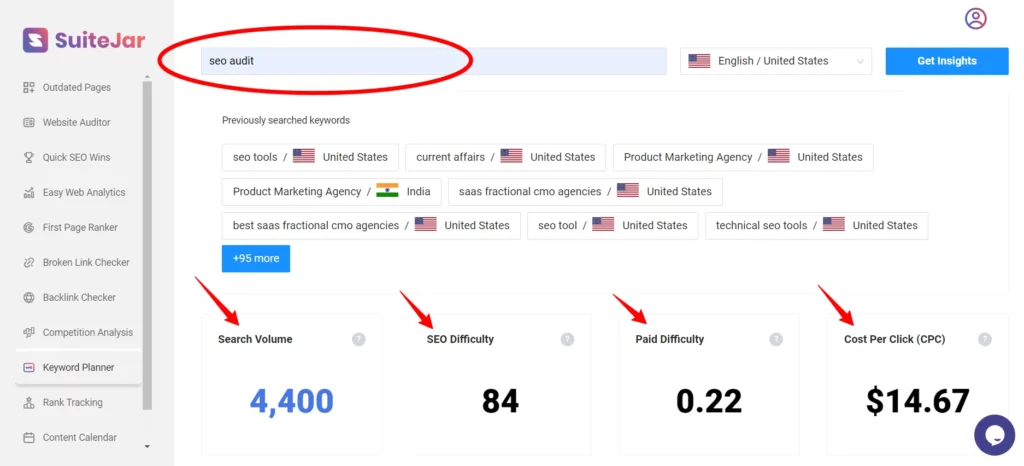
This SEO tool helps identify keywords that are closely related to search intent. By addressing multiple related keywords, you ensure that the content is thorough and covers the topic.
Further Read: The Role of AI in Streamlining Keyword Clustering
- Map Your Keywords
Keyword mapping is called assigning specific keywords to pages on your website. This helps to make sure that each page targets relevant and effective keywords. This keyword mapping helps in maintaining a perfect structure that makes search engines crawl more easily and index the content effectively.
- Create Quality Content
Every piece of content on your website has to provide proper information to the readers. Create quality content that aligns with your search intent and uses proper keywords. You can update the website content based on the questions or doubts that the readers ask. This writing with proper content relevance will help you get more users, which will help you rank.
- Proper Title And Meta Descriptions
Proper titles are the main factor in your website. This has to be clickable so that users will be attracted to your site. Add the primary keywords in the meta title and description naturally.
- Optimize Your Html Headings.
Use proper headings on your webpage to help structure the website. These HTML headings (H1, H2, H3, H4,…) are very important for your website and in the rankings. You can use the keywords here, too.
- User-Friendly URLs
Create URLs that are short, descriptive, and relevant to your website page content. Include the primary keyword in the URL to help you rank higher.
- Images Optimization With Proper Filename
When adding images to your webpage, add proper filename and alt text to all the images. You can incorporate the targeted keywords to help you with your SEO.
3. Make Your Site Mobile-Friendly And Responsive
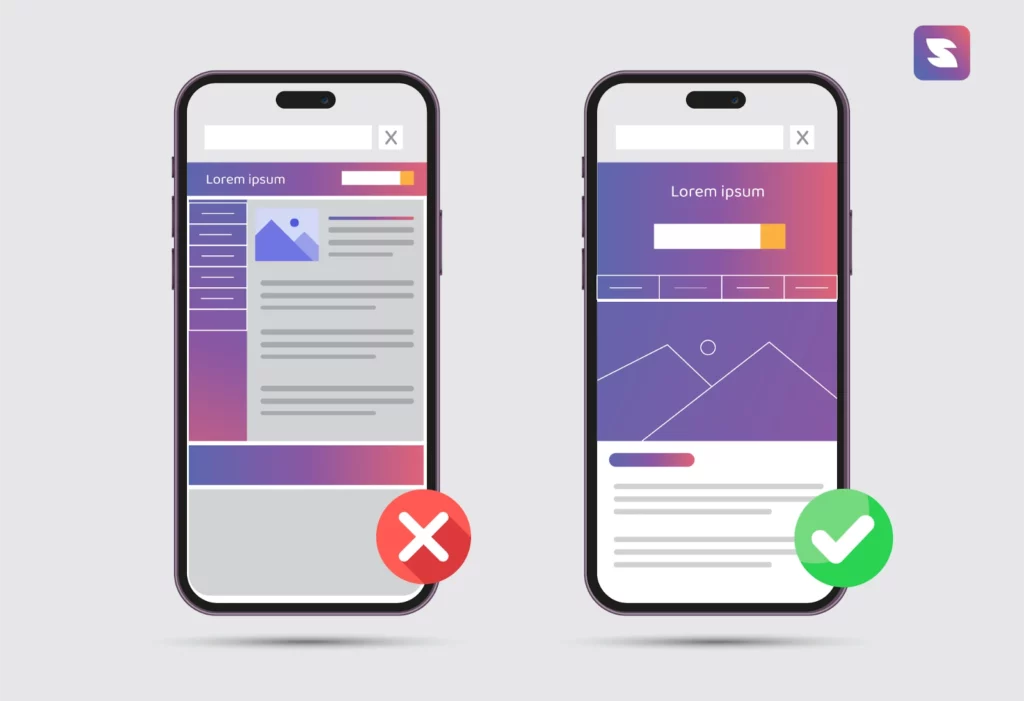
You have to ensure that your website is mobile-friendly, which means that it looks good and functions well on mobile devices. This is important because users nowadays access the web via smartphones and tablets.
- Build a Responsive Design
Try to build a responsive and mobile-friendly design for your business website with proper functionalities. It will automatically adjust the layout, content, and functionalities. It also fits the screen size and resolution of any device.
Make sure all the buttons and links are easy to tap for your audience. The spacing, too, has to be optimized to prevent accidental clicks. Ensure that text size is readable without needing to zoom in. And make the content easily scrollable on a mobile device.
- Ensure Your Website Is Crawlable
A website that’s fully crawlable allows search engines to easily explore and index the pages.
If you are feeling any crawling issues, you can check your robots.txt file. This helps in making sure that you are not preventing search engines from crawling mobile pages.
Google’s Mobile-Friendly Test tool is another way that you can find and fix any crawl errors or usability issues specific to mobile versions. Try to include the same structured data markup on both mobile and desktop versions.
- Optimize Website Images and Other Media
Since speed and efficiency are important for mobile users. So, optimizing your website’s media files becomes necessary. There comes many tools that will helps you in easing the job. Using the tool helps compress your website images without losing quality. In these times, designers are using modern image formats like WebP. This helps in superior compression and quality compared to other formats.
- Implementing AMP Methodology
This is not necessary for all websites. Implementing AMP into a website helps improve the mobile experience. This will create lightweight pages that load quickly on mobile devices.
- AMP HTML: AMP HTML codes to build lightweight versions of your website pages.
- AMP Cache: AMP Cache can serve cached versions of your AMP content. That will speed up the times considerably.
4. SEO Tools For Competitive Analysis
1. SuiteJar

SuiteJar is an competitor analysis tool that you can use in searching your competitor. The tool offers many features that you can keep up with your competitors for getting their insights. You will get detailed data of your competitors website.

The tool offers metrics such as domain authority, spam score, estimated organic traffic, and page traffic. And their insights into their keywords and backlinks data.
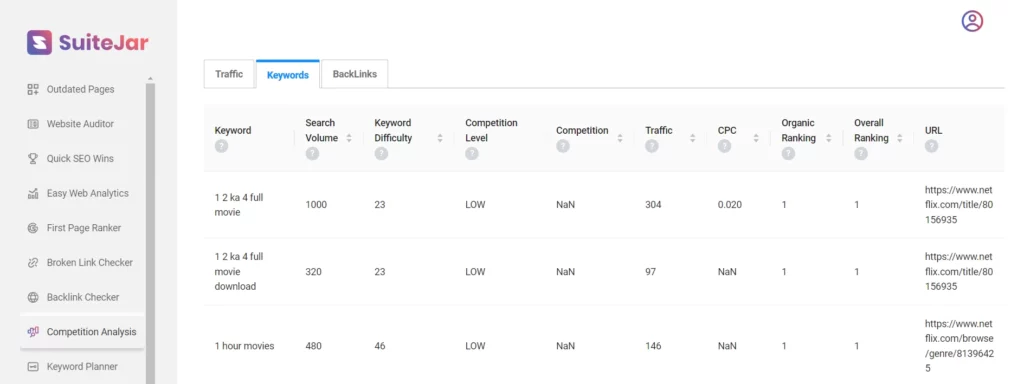
Pricing:
- Lite: $49 per monthly
- Plus: $79 per monthly
- Pro: $139 per monthly
2. Ahrefs

Aherfs is another competitor analysis tool that helps you to analyze your competitor’s website. It has a feature, ‘Site Explorer,’ that helps you view the competitor’s backlink details. You can also understand website organic traffic information and the details of paid traffic. The tool offers a free site audit, so you can enter the site URL and start the audit. You can see the performance of technical and on-page seo recommendations.
Pricing: $99 to $999 a month
3. SpyFu
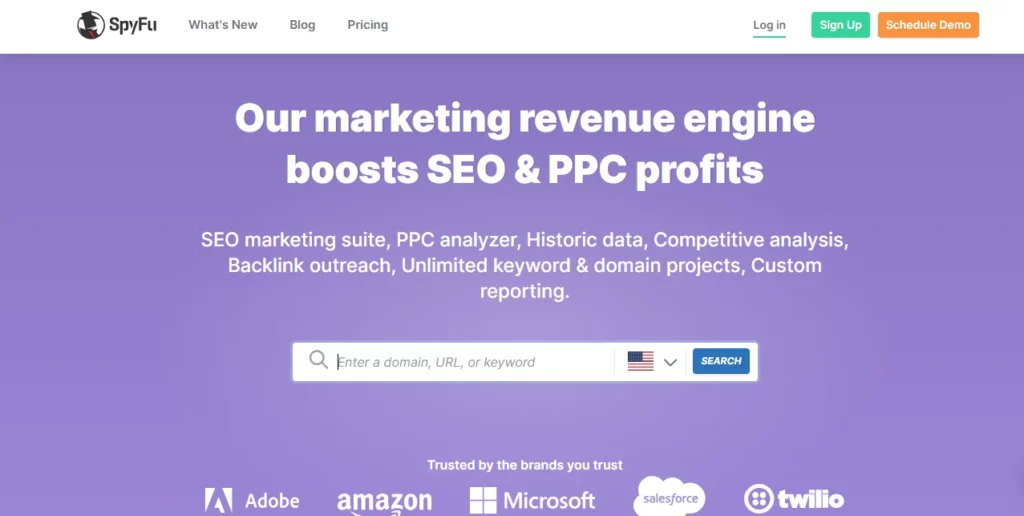
In the spyfu tool, you can enter the website where you want the insights. You will get the details of your competitor’s backlink information, keyword rankings, and performance data. You can also compare two websites’ domains at once in spyfu, which makes it easy to pit your competitors against each other.
Pricing: $16 to $299 a month
5. Create High-Quality Content
Quality content is creating useful and relevant content for your website. those content is well researched one that provide genuine value.

Follow these steps when you are creating quality content,
- Start With Research
Before writing the content, you have to research the topic thoroughly. You can look into the different forms of content and identify what competitors are doing. You can add reliable sources like facts, statistics, and current trends that will give your content authenticity.
Use a keyword research tool to ease this step. You can find the keywords that are relevant to the content with an affordable SEO tool. Before writing,, understand the ICP of your business so that you can write the content according to that.
- Identify And Address Your Customer Requirements.
Identify your challenges or needs that you can rectify through your content. That helps your content to address the specific questions or solve problems that your customers have. This approach shows your content is valuable and directly relevant to your audience. Write the correct solution or useful information that helps your audience.
- Always Focus On Clear Information
Write each piece of content that provides new or unique information for your readers. You can add clear data that no other articles are doing. And make sure you have to gain the reader’s attention with valuable content.
- Showcase Your Expertise
Write the website content to showcase your business expertise. This is a proper, natural way that can help you build trust with your audience. You can include unique professional insights and experiences in the content. Adding real-life examples or case studies to the website will show the knowledge to your audience.
6. Answer Frequently Asked Questions
Add FAQs to your website content with proper keywords. This method will help you increase your rankings in search engines. A clear FAQ section to address the common questions of your audience is what every user wants. You can include long-tail keywords in these FAQs for seo.
- Make It Easy To Read
Structure your content to make it easy for your readers to read. Use proper short paragraphs, headers, and apt bullet points that help to make your information stand out. Subheadings and listings help you to organize the content logically for your audience.
- Add Images And Videos
You can insert proper images and videos into the content on your website. Include only the relevant images, infographics, and videos that have to be complementary to the text. Also, add keyword-oriented ALT text to the images and videos so that it helps you in your seo.
- Update Your Content
The last thing you have to do is update your content during a particular time period. You can refresh the articles with new information, updated statistics, and trends as needed.
Suggested Read: Tools and Techniques to Detect Outdated Content
7. Use Social Media Marketing

Social media is the easiest way for you to build relationships with your target audience. It is completely different from SEO in that it is posting and optimizing your content on social media platforms. You can attract potential customers through proper social media strategies. It can very much complement to SEO and helps you in getting new customers.
Here are some strategies that you can use in your SMM marketing,
- Social Share Buttons On Your Website
Integrate your social media buttons on your website. This will help your visitors to easily access your social media platforms. Also, you can get traffic back to your website by implementing this method. You can make these buttons visible and place them in an easily-catching area.
- Integrate Keywords
Use your focused keywords in your social media posts to help increase your search results. You have to understand the search terms most commonly used by your audience and add them according to that. It helps get a bigger audience on your social media platforms and your website.
- Include Links In Social Profiles
Insert links in your social media profiles. You can include in your official website, landing ages or other places. It directs traffic from your social media to platforms where engagement and conversions occurs.
- Optimize Your Social Accounts
You can optimize your social media accounts with correct updation. You can add a clear logo image of your business and a clear bio and update your contact information, too.
- Build A Strong Relationship
With social media, you can build a clear relationship with your targeted audience. You have to engage with them by writing replies to their comments and giving replies to messages, and you can ask for feedback, too.
Conclusion
Remember these SEO rules, which will always be the most important component of your search engine optimization strategy. Apply these rules to your business SEO and see the changes that result.
Following a step-by-step process can make any task easier. Throughout this blog, we have discussed every point with proper steps, which is extremely useful for your search engine optimization strategy. You may also hire an SEO agency to take care of all these steps on your behalf.

